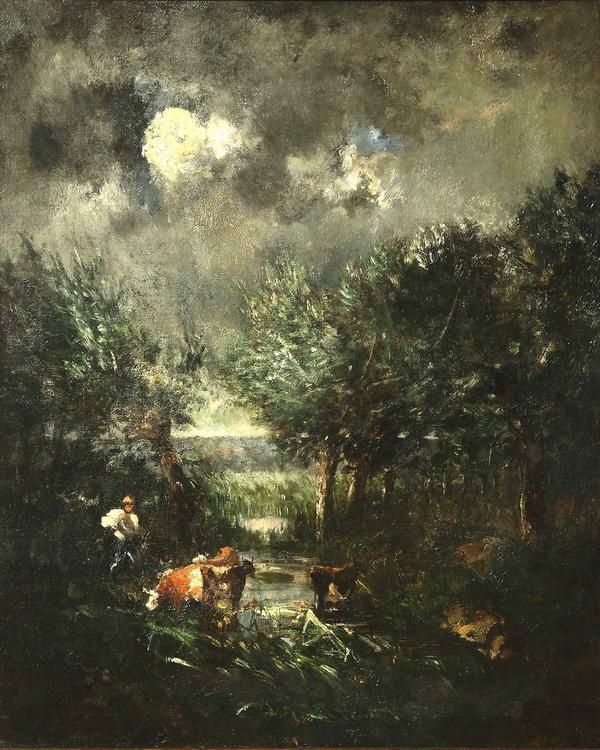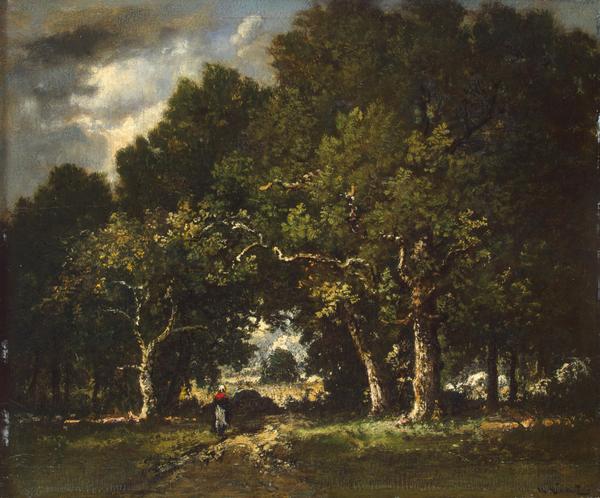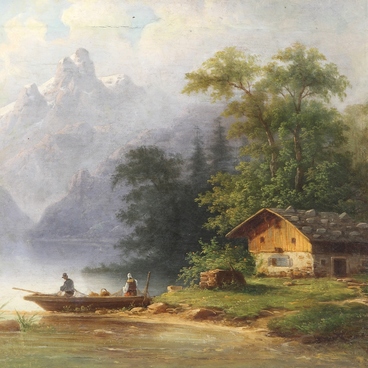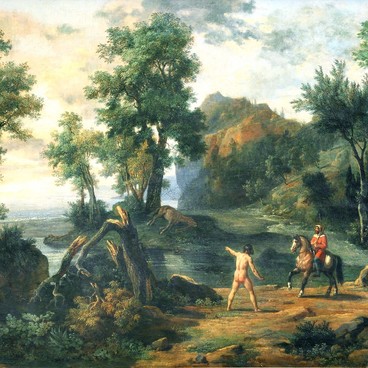Camille Magnus painted Near the Water. A Landscape with Cows in 1875. The French artist depicted a shepherd and cows by a stream amid lush vegetation using thick strokes to create a rough, three-dimensional paint surface. The dominant hues of brown, green and gray are masterfully emphasized with white and blue highlights. Camille Magnus painted Near the Water. A Landscape with Cows in 1875. The French artist depicted a shepherd and cows by a stream amid lush vegetation using thick strokes to create a rough, three-dimensional paint surface. The dominant hues of brown, green and gray are masterfully emphasized with white and blue highlights.
1 / 2
Near the Water. A Landscape with Cows
Время создания
1875
Размер
66x55 cm
Техника
oil on canvas
Коллекция
Выставка
4
Открыть в приложении#1

Camille Magnus
Near the Water. A Landscape with Cows
#2
#3
Art historians are not sure about the place the artist depicts. They suggest that it might be the Fontainebleau forest where members of the so-called Barbizon School often worked, Camille Magnus representing the second generation of the highly esteemed movement of plein-air painters.
#4
It is an informal school of painting: representatives of the art movement had different manners of painting, but they all depicted living impressions of nature creating realistic native landscapes that often featured the life of common people - shepherds, brushwood collectors, and plowmen. Their principal technique was plein-air painting: they drew their sketches right away, outdoors, observing natural settings and trying to capture real colors and lighting. Then they went indoors, to the studio, to complete the paintings.
#5
The name of the school derives from the name of the village of Barbizon, where the community of mid-19th -century painters worked. The school artists associated with this area include Théodore Rousseau, Jean-François Millet, Jules Dupré, and many others. They all painted landscapes and scenes of rural life, but each still interpreted nature with great individual expression, be it a lyrical landscape or a large-format painting, the latter typical of Camille Magnus.
#9
He tried to capture the complexity of nature in its transitions including the moving air and the changing light, contrastive dramatic clouds and bright sunrays, a reason why art historians called his images of nature impressive and emotional.
#6
While painting Near the water. A Landscape with Cows, Camille Magnus was inspired by the manner of his teacher, Diaz de la Peña, who knew how to harness dramatic effects of color and light in his landscapes.
Narcisse Virgilio Díaz de la Peña. Road through the Forest, a fragment.1850-s.
#7
Art historians say that Díaz de la Peña influenced Magnus' artwork a lot.
#8
‘But it would be unfair to call Magnus a copycat artist. The landscapes and the characters that he depicts demonstrate a mastery of color which is very close to that of his teacher’,
— wrote the art critic Thomas Ellis Kirby.
#10
Yaroslavl Museum of Fine Arts
читать дальшескрыть
00:00
00:00
1x
Near the Water. A Landscape with Cows
Время создания
1875
Размер
66x55 cm
Техника
oil on canvas
Коллекция
Выставка
4
Открыть в приложении
Поделиться




